What is Shou sugi ban siding?

Shou sugi ban is an ancient Japanese carbonized wood finish created by burning the surface of wood to preserve it. The final product is also known as Yakisugi (yaki means to cook/burn and sugi is the Japanese name for cedar), but shou-sugi-ban seems to have won as the most commonly used term in English, and it is sometimes simply known as a carbonized wood finish.
Usually done with planks of cedar or larch, the thin film of carbon that is created during a very light surface burn protects the wood. This draws out moisture, and the resulting chemical compound protects the wood.
Cedar and larch are local, very durable and resistant to rot. This process can also be done with other common woods such as pine, hemlock, maple or oak and is the perfect finish to the exterior of a variety of wood framing materials.
How carbonized wood finish is made:
Wooden boards are burnt on each side, which is usually done with a blowtorch. Using a stiff brush, carbon residue is then removed from the boards and the material is rinsed with water.
Once a board is dry, it's ideal to apply a natural non-toxic oil to seal it. Colours usually range from a very rich natural wood colour to a deep black. The final appearance is determined by the species of the wood, the extent of the burn and how vigorously it is brushed. The colour can be further manipulated by using stain instead of oil.
Benefits:
- Durable and long lasting: the life expectancy of shou sugi ban is estimated at more than 80 years when properly maintained.
- Life-cycle: Wood is a renewable resource and no chemicals are required for finishing. We would be remiss not to acknowledge the fact that fossil fuels are required for the burn process, but the ensuing lifespan makes that sacrifice negligible.
- Aesthetics: You can get a variety of beatiful colours out of it depending on how deep you burn and how deep you brush, to further alter or enhance colours - and it can be stained as well.
- Water resistance: The combination of carbonized wood and oil makes the board resistant to water and mould.
- Fire resistance: Believe it or not, burning wood can give it flame retardant properties. Who knew?
- Insect resistance: Termites and other problematic insects hate burnt wood.
Maintenance:
If the intended use is to have it outside and exposed to weather (cladding, fences, long-lasting decking), it should be oiled about every 10-15 years, which is fairly standard for exterior wood treatment. It will retain its colour better and will remain water-resistant longer if it is well-maintained.
For interior purposes where it will mostly be seen and not touched, it will require virtually no maintenance.
When used as furniture, the required maintenance would depend on its use - a coffee table may take more of a beating than other pieces. But maintaining oiled wood is pretty simple; it takes little more than a quick hand-sanding if necessary, and wiping on a single coat of oil.
Shou sugi ban siding and torrefied wood:
There is a related wood treatment called torrefied wood or thermo-modified wood, where milled planks are baked in a high-temperature oven. Virtually all the moisture is removed during this process, which can change the crystalline structure of cellulose. This makes the wood more dimensionally stable and resistant to fungal growth but, at that point, it is less resistant to impacts and abrasions. Also, it is the charring of shou-sugi-ban that gives it its protection against UV rays. With torrefied wood, some of those advantageous characteristics are lacking; additionally, stains and oils do not adhere to it as well after processing.
How to make shou sugi ban wood siding:
In order to obtain a consistent-looking final finish you need to be very precise. The torch needs to be passed at the same speed and held the same distance from the wood to get a uniform burn. This can also be done using coals from a fire, but this will likely result in a far more inconsistent final finish.

Still important to be precise but not as easy to screw-up, would be brushing off excess carbon. Keep an even pressure on the brush, and always go with the grain. This stage may actually help you bring boards back to a desired colour if you over-burned them a bit in places, by brushing a little more vigorously.
When oiling the wood, spread it evenly over the surface with a rag or brush (going with the grain of course). Wipe off the excess and allow it to dry; a second coat of oil at this point is recommended.
You'd need to be okay with slight variations in colour and consistency if you want to try this yourself, but if you really want it uniform in colour, it is best purchased from a professional manufacturer. Alternatively, reclaimed timber could also be an Eco-Friendly Shou sugi ban choice, as the burnt finish should equalize out the color differences of reclaimed timber planks.
So, this process is not complicated but should be done with safety in mind; remember you're playing with fire here. Keep some water close by and use goggles and a respirator when brushing and oiling Shou sugi ban siding boards - the perfect exterior finish for any Eco-friendly sustainable home design...
 |
|
The beauty of Shou sugi ban Japanese carbonized wood finish © CDR Studio Architects
|
 |
|
Shou sugi ban black Japanese carbonized wood finish Bl© Matsu Accoya Designer Studio DB
|
 |
||||
|
© Shou-sugi-ban carbonized multi-toned used for interior finishing © Zwarthout.com
|
Now you know about Shou Sugi Ban carbonized burnt wood siding. Discover how to build more resilient homes in the Ecohome Guides and on these pages here :
Learn about the benefits of signing up for a free Ecohome Network Membership here! |





















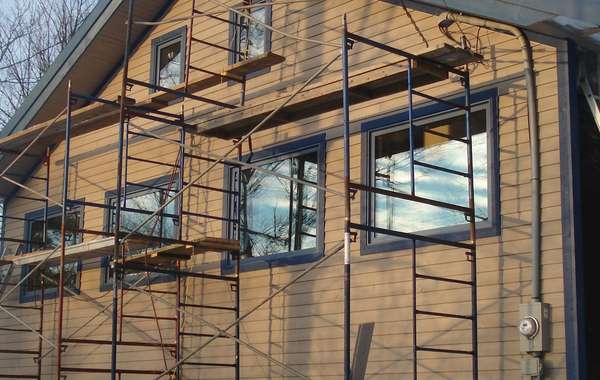
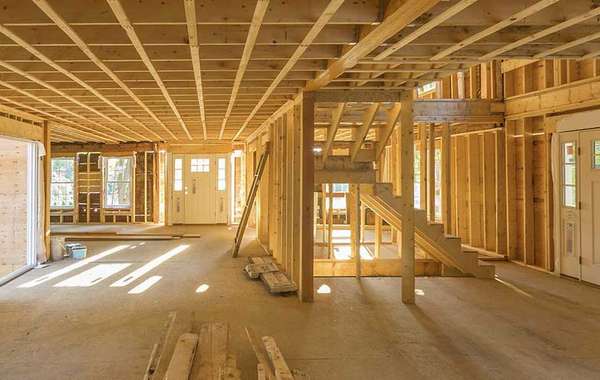
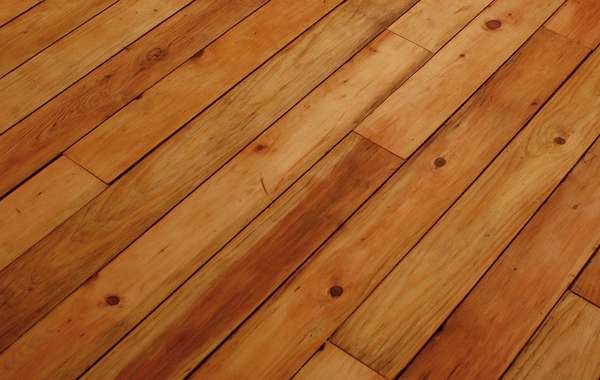
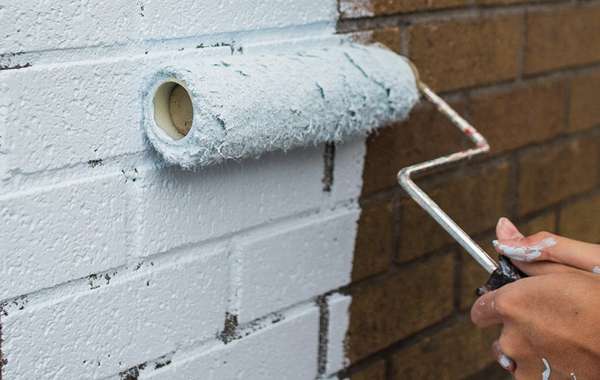
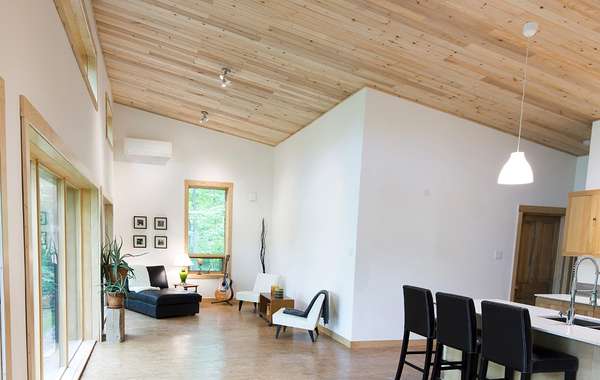
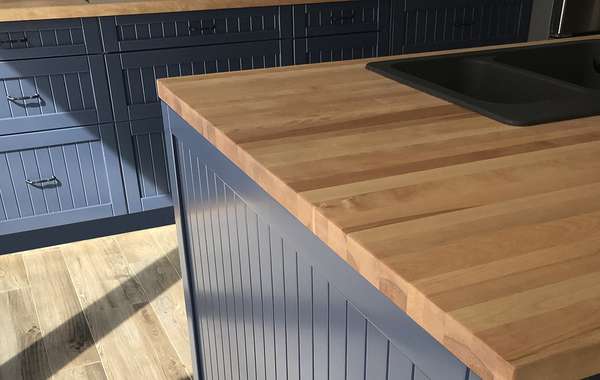
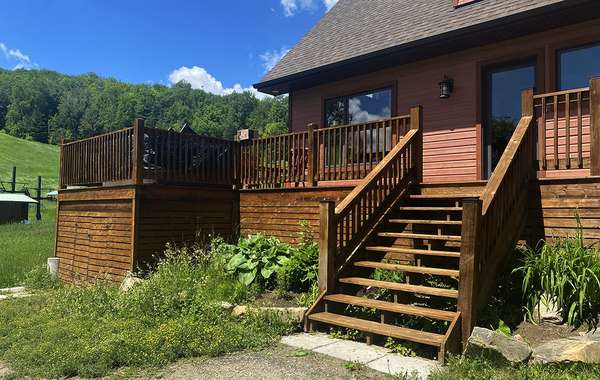
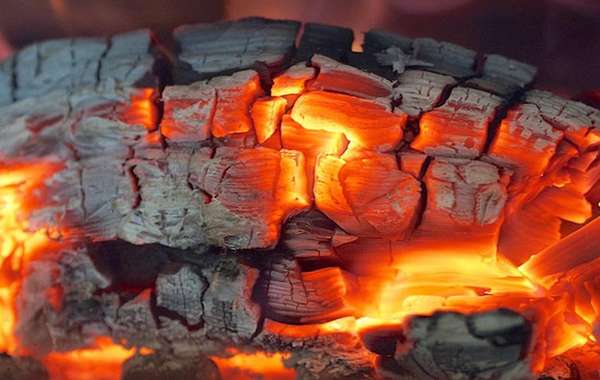

I'm finding it difficult to reconcile these statements:
Once a board is dry, a natural oil is applied to seal it. ... The colour can be further
manipulated by using stain instead of oil.
... use goggles and a respirator when brushing and oiling boards.
and:
... no chemicals are required for finishing.
That's meant as an overall safety precaution, for the dust from scrubbing off the burnt surface. The particulate is not good to breath, and no fun to get it in your eyes. Regards.
We are in the process of completing the siding of our tiny cabin with burnt pine boards purchased from Big Box Lumber. We put shiplap cuts, burnt and oiled each board. It's been a lot of work. I will add that wiping off the soot is very messy. But the end look is amazing on the cabin.
Can this process be done on finished or urethaned furniture??
Hi T Haupt
No, that would not be wise, only do this on raw wood so you aren't burning urethane. Unless I'm misunderstanding your question - I would have no problem doing this with raw wood, then building furniture and putting on a sealant or finish afterwards. I would first try it with a small piece of wood to see how it reacts to make sure you get a look you like. We would always avoid varnish and other toxic wood finishes, so have a look at natural non-toxic wood finishes and sealants, it makes a really nice looking finish, its healthy to do and live with afterwards and easier maintenance.
Hi there. Just wondering at the very top of the page there is a picture of lightly burn and grey ish colour wood. How to achieve that look?
Hi Chris, Making shou sugi ban siding is not an exact science, the best I could say would be to go with a 'trial and error' method, hopefully with less 'error' :) The final look you get will be determined by the species of wood, how long you burn it for, how much you sand it and whether or not you apply a stain to it afterwards. That one is quite subtle so it would have been a light burn for sure, compared to some of the darker and black ones. I took that photo myself of a Tiny House I had seen, and regrettably I did not ask the builder about his technique, sorry. I would recommend you find a few short ends of wood like cedar or pine to experiment on and try a quick burn and a heavy sand, then lengthen your burn time and maybe shorten the sanding. But keep track of your results!
And I will say, that is one of my favorites as well, so if you do such an experiment and feel like sharing, please send us some pics of what you settle on along with how you did it and we can include it in the above story. Good luck!
We used shou sugi ban for the siding and overhangs on our new Passive House here in the Chicago suburbs. Although we still love the look of the siding, it hasn't been an easy process. You can learn about our experince in detail here: www.kimchiandkraut.net
I'm looking to use this method on some interior headers and pillars with some cedar planks using a heavier burn for a darker color. Will this draw enough moisture from the wood to prevent the boards from shrinking over time? I'm worried I'll go through the effort for this beautiful look only to see it end up with large gaps like you see in a cedar fence.
Hi David,
This wouldn’t do much at all to remove moisture and prevent wood from shrinking. Think of it a bit like searing a steak on a barbeque, you’re just burning the outside. To remove enough moisture so it won’t shrink you would either need to use kiln dried wood or let it air-dry first.
Thanks Mike,
How long should air drying take for 3/4"X 7 1/2' planks? I live in the Central Valley of California where it's already mid 70's in late Feb. 60 days?
Is this freshly cut trees or kiln dried wood? It really depends on what you start with. Be sure to stack them with spaces on all 4 sides, best is full sun and open to breezes if possible, and if its on the ground you might also be wise to lay down a tarp below first so the ground doesn't provide moisture as well, but make sure its slopped slightly so water can't pool underneath. There is a general rule that it takes about a year per inch to air-dry wood, but you are also at an advantage doing this in California where it is hot and dry.
To be really sure, you might want to get a moisture meter for the wood to check it. Ideal is if the wood you are installing matches the general humidity level of the home, that way it won't shrink OR expand.
And please get back in touch with us if you end up doing this and let us know how it worked out!
Hello! I'm pretty much set on cladding my winery, which we are building next year, with non brushed raw shou sugi. Luckily, we are building a garage this year and I can use it as a proof of concept. I was first considering eastern white cedar, but I was told that it has very thin growth rings, which makes the soot layer very fragile and flaky. This seemed to be the case of a house I recently visited which was done in white cedar last year. The owner did admit to not controlling the humidity of the wood prior to the procedure so that might have had an impact as well. Right now I'm doing some tests with eastern hemlock and it seems to require more flame than cedar, but the soot layer appears more durable. Any thoughts? What is the best humidity content of the wood before burning?
I built a raised veggie bed 5 years ago from Western Red Cedar. I was told it would last at least 15 years in its natural state. Last week I had all of the soil removed and found rot on the bottom run (against the ground and facing the soil on the inside). I don’t think the rot has penetrated more than 1/2” into the 1.5” actual thickness. I don’t have the means to get more wood to replace it. Can I use this burning technique on the rotted area if a managed to dig at least some of it out? (I would be doing the whole bed inside and out, but without disassembling it to get the edge faces). Would this increase the beds lifespan? Would it help if I raised the bed up on a single layer of loose bricks? Next year I want to build four more beds. If I burn and oil them (all faces) before assembly, what sort of lifespan do you think I might be able to expect? I am 60 years old, so 35 years would be good!
Hi! I want to use Shou Sugi Ban to seal my deck, Im just wondering if I need to strip off the current layer of stain thats on it, or can I just burn it off? And all of the places that talk about it say to oil it after, what type of oil can I buy that will bring out the beatiful look without having to heat it up or mix with other things? and is the oil just for the looks, or does it also seal the wood?
I recently renovated two benches with cast iron ends and used 5/4x4 red cedar boards ripped down to 2-1/2 inches for the seat and yellow select pine for the back surround. I cut the pine to fit around the cast iron back then did Shou Sugi Ban on all of the wood. Burned rather heavy so that the burnt surface was "crocodiled". I then used a wire brush wheel in a power drill to remove the char as this popped the grain. Then I applied one coat of stain and one coat of Marine Sealer followed by 3 coats of Spar Urethane. The boards came out great. My only regret was burning the back surround boards AFTER I fitted them to the cast iron back. I probably should have reversed the process so that the back surround boards would actually fit better. But it is what it is. I'm learning as I go. The project was for a deli owner for seats for customers outside. I charged him only for materials and not my labor. It took me about 60 hours to complete the two benches. If I did charge for my labor it probably would have been cost prohibitive. Wound up being about $500 for materials. I could have easily charged him $1,000 per bench. It kept me from sitting in front of my TV for weeks in the summer in between surf fishing. I really enjoy the process and the way it makes the wood grain "POP". I have 3 more sets of ends and backs so I will be keeping busy for the immediate future. The benches will be seen and used by many affluent people in an affluent area so maybe I'll get orders from people that don't mind paying up.
Ok - gotta a totally different kinda question... I LOVE the look & spa feel of teak as the flooring of a shower. Would you think Yakisugi would be another option given its resistance to mold & moisture? I'm guessing I'd need to oil it more often than every 10 years...but hopefully less often than teak? I made an outdoor table over the summer - it's BEAUTIFUL! I love Shou Sugi Ban!
Sorry - teak autocorrected to real. Meant - less often than teak. :)
Hi! I'm starting the project today and have a couple questions. I'd like to try to stick to the most authentic Japanese style, do I need to oil the wood after charring and how much of the plank do I char (do I char the ends?)
My brother in law built house in Tennessee and the woodpeckers are putting holes in it. Is there anything to stop them?
That's a tricky one, they could be doing that either because they think the sound is good for attracting mates, or it could be that there is food in the wood. Some people recommend wind chimes, hanging tin foil or mirrors, but of all the solutions we've heard of, the most appealing would be fake owls. They are pretty easy to find at most box stores or even get delivered to your door if you order one online.
I want to build a Passive House. Does Shou Sugi Ban fit in with that concept. Can I get certified if I use it?
Hi Jennifer,
Using Shou Sugi Ban siding would have no impact on getting Passive House certification, its a perfectly good wood siding. Passive House is about energy performance, they will want to know your wall assembly, but this is just standard wood siding so I would figure you're good to go with it.
Do you think charring 2x10s on all surfaces would be effective for preventing rot from ground contact when they are used to build raised beds for a vegetable garden? (The inside of the boards, as well as the bottom edge, are in contact with moist dirt.) It seems it would be best to char the inside surface heavily and not remove much soot.
Hi Sonny. It is said to offer greater protection against rot, but that would be for exposed wood that can dry. This proceedure is something of a investment in time, and I would be doing it more for the aesthetics rather than expecting an extrememly extended life span, certainly if it is always going to be exposed to wet soil.
That to say, I would not build garden boxes out of it myself, the added investement of your time or money would not reap the benefits you would get if you were to apply that added investment to using recycled plastic composite lumber instead as an example.
Thanks Mike